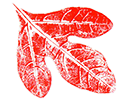What I refer to as the fall asters are actually multiple species within the genus Symphyotrichum. Most of these asters have either white or purple flowers with yellow centers. A few of the common fall asters in Kentucky are New England aster (Symphyotrichum novae-angliae), frostweed aster (Symphyotrichum pilosum), calico aster (Symphyotrichum lateriflorum), and white heath aster (Symphyotrichum ericoides). The fall asters start blooming in late August, but peak in September and October. These are some of the last wildflowers to start blooming each year and they will often continue blooming until we get a killing frost.

Asters are important native flowers for honey bees, native bees, and butterflies. During the summer, the asters are host plants to the caterpillars of some of the crescent and checkerspot butterflies. Later, when they start blooming in the fall, the asters become an important source of nectar and pollen for numerous species of bees and butterflies.
Fall provides a unique challenge for pollinators. Some butterflies, like the monarch, are migrating and rely on fall flowers, like asters, to provide the fuel they need for their long-distance trips. Bees, on the other hand, must gather a surplus of nectar and pollen to store for the winter. Our native bees are mostly solitary or only semi-colonial so they don’t need to store as much nectar and pollen as honey bees. However, the native bees also don’t have their hive mates to help in the winter preparations; each bee must do everything for herself.
Honey bees must gather much more nectar and pollen than do native bees because honey bees have to store enough food for the entire hive to eat over the winter. The challenge of storing enough nectar and pollen is even greater for the honey bees because during the summer in Kentucky and much of the southeast there isn’t much blooming that the honey bees can use. The hive, therefore, usually starts the fall with little to no excess food and must gather everything it needs to keep itself alive through the fall plus the extra it needs for the winter. Luckily asters produce abundant nectar and pollen and bloom late into the fall.
Native asters are relatively easy to grow and make a great landscape plant. They look beautiful when planted in drifts and mix well with other wildflowers. Asters grow best when they get full sun for at least half the day. You may need to occasionally water your asters for the first year or so after you plant them. However, once they are established, asters need little to no irrigation even during our hot, dry summers. As native wildflowers, the asters are adapted to our normal summer droughts. Asters are perennials and will come back year after year while providing late season nectar and pollen for a variety of pollinators.

This article was part of Shannon’s original Kentucky Pollinators and Backyard Wildlife blog which evolved into the blog for Backyard Ecology.

Backyard Ecology: Exploring Nature in Your Backyard
Nature isn’t just “out there.” It’s all around us, including right outside our doors. Hi, my name is Shannon Trimboli, and I am the host of Backyard Ecology. I live in southcentral Kentucky and am a wildlife biologist, educator, author, beekeeper, and owner of a nursery specializing in plants for pollinators and wildlife conservation. I invite you to join me as we ignite our curiosity and natural wonder, explore our yards and communities, and improve our local pollinator and wildlife habitat. Learn more or subscribe to my email list at www.backyardecology.net.

Leave a Reply